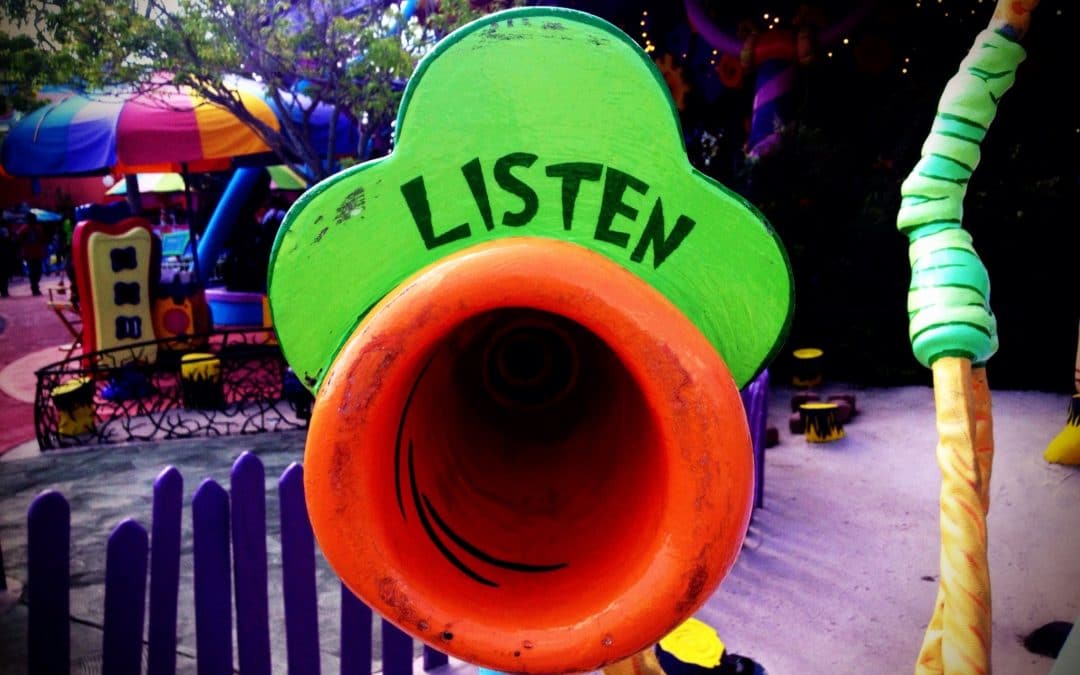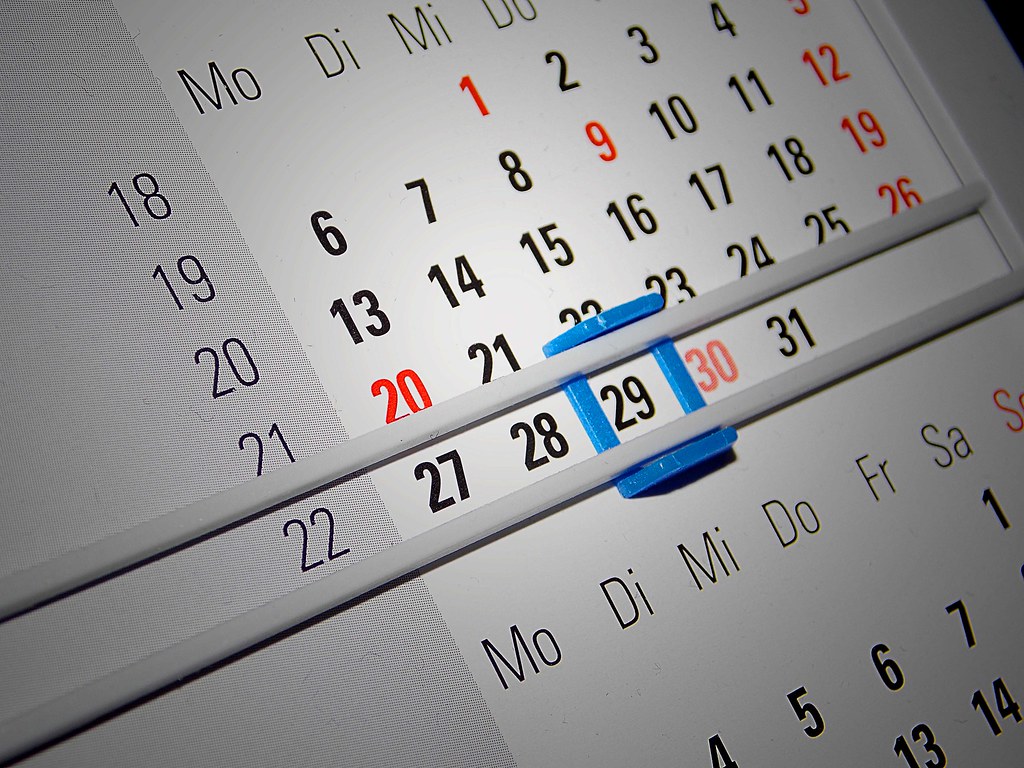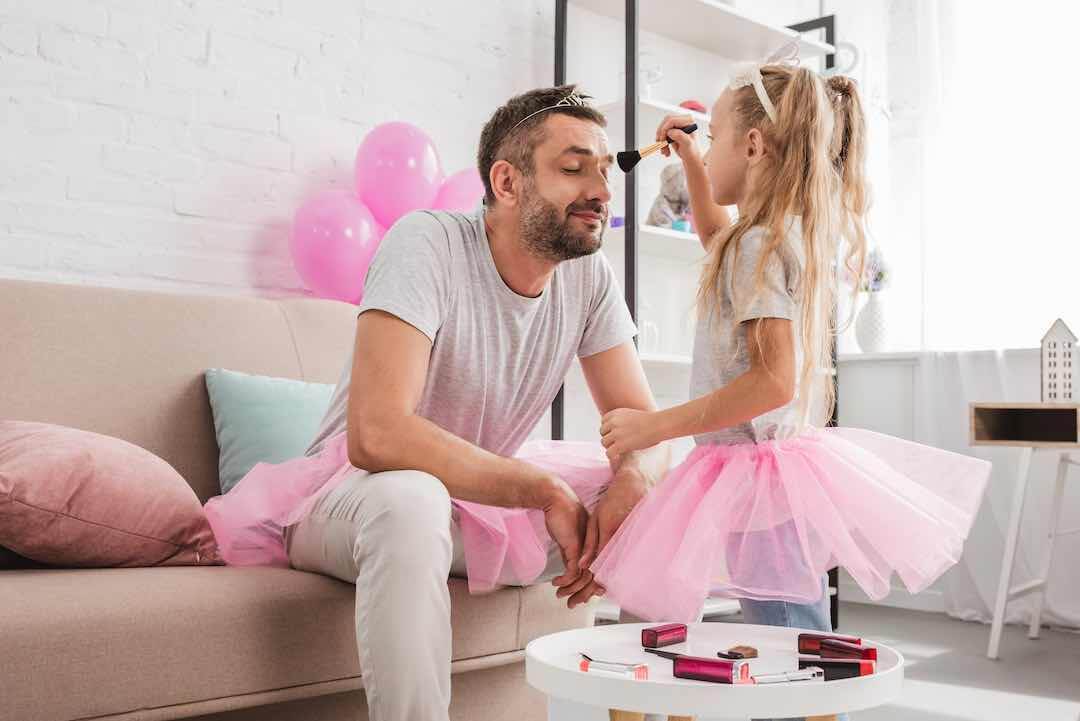Warning: Undefined array key 1 in /var/www/wp-content/plugins/monarch/monarch.php on line 4359
Active listening means a lot more than simply “listening.” And, it really is a great gift to everyone in your life. Are you already an active listener?
What is active listening? Have you ever participated in a conversation where you and the other person are talking about two completely different things and yet the conversation continues on? This has happened to most us and we’ve witnessed these conversations both in our personal interactions and in our professional interactions. Many people are just waiting for their turn to talk. These folks listen only for the break in conversation….and then….on with their next idea!!
Active listening solves this dilemma. Active listening is a soft skill you can develop to ensure you are listening to understand rather than listening to respond. With active listening, you use all five of your senses to ensure you are picking up on both the words being conveyed and the underlying messages the speaker is conveying with their body language and tone. In other words; with active listening, you pay attention to the whole story. Active listening is one of the best gifts you can give yourself and the people you care about.
Active Listening Means You Retain More
So what does it mean to be an active listener anyway? Listening is just part of communicating and we’ve been doing that our whole lives. It’s easy. Right? Listening is simply one-half of the action you take when you hold a conversation. And yet, if you don’t focus you will miss the point.
In reality, listening effectively is not that common. Most People forget half of what they are told within minutes of having a conversation. Half.
Sheldon is not a good listener. See for yourself in this funny clip from the show “The Big Bang Theory.”
Sheldon was listening just close enough to get an overview of what Leonard was saying. But he was not actively listening. The end result was a rather comical breakdown in communication for sure.
This is a drastic example of listening to respond. However; if we are honest with ourselves; we’ve all been guilty at some point or another.
Characteristics of an Active Listener
There are some characteristics that are prevalent when someone is engaged in active listening. These characteristics lead to a more open communication which improves your relationship with that person.
-
Be Self-Aware
There are many things you can do to become a better active listener. Being self-aware is one of the most important characteristics you can develop. A self-aware communicator understands how his or her mannerisms and vocal inflection affects others. This awareness allows you to make adjustments in your listening-style when you become aware that you aren’t getting the whole message.
-
Be Present
Being present is a great life skill to develop and it is very important when practicing active listening. Many folks who are poor listeners are distracted and focused on other things during the conversation at hand. This is common in the work place. It is also common in day to day life. We are busy by nature. Being a good, active-listener means focusing on the conversation at hand, with no distractions. Much of the information that comes to us in a conversation is non-verbal. Being present ensures you won’t miss those cues.
-
Be Engaged
Active listening is effective because you are more engaged in the conversation. An active listener will give verbal and non-verbal cues to indicate understanding and participation. These cues could be simply smiling or nodding in affirmation or they could be verbal cues prompting the conversation along. Participating this way helps build rapport and makes the speaker feel confident moving on.
-
Use All 5 Senses
Active listeners use their sense of hearing with focus and intent. However, they don’t stop there. They use all their senses to get a read on what nonverbal cues the speaker is giving them. Body language can be seen and the energy of strong body language can be felt. Using more than just your sense of hearing ensures you are listening to the whole story and seeking to understand the meaning that lies beneath the words.
-
Respond Appropriately
When you employ active listening; you have taken the time to understand both the meaning of the words and the underlying meaning of the body language of the speaker. Because of this; an active listener will respond appropriately which gives the speaker more confidence and encouragement to continue communicating.
Image: CC 2.0 by flickinpicks via Flickr
Active Listening Takes Effort and Focus
Have you ever heard the phrase: You’ve got two ears and one mouth? It’s a good thought to keep in mind when you are trying to improve your active listening skills. The easiest way to shut-down communication is by interrupting the speaker. We’ve all done this. Some of us do this more often than others. It should be common sense that interrupting someone is not a good listening tactic.
Why do we interrupt people?
We Make Assumptions: It is dangerous to assume you know what someone is going to say. And, even if you do, it is a very poor listening tactic to interrupt someone while they are conveying a thought. Doing this erodes rapport and trust. The person speaking will be less likely to want to open up to you if you don’t give them space to share their thoughts.
We disagree: Interruptions often happen when we disagree with something someone is saying. Disagreement and debate can be very healthy. The way you handle those situations will dictate whether or not people will feel comfortable, or “safe”, talking to you. Hold on to your disagreement until the speaker has completed their thoughts. That is a matter of respect and keeps the conversation balanced.
We don’t have time: The world is a super-busy place. There is a lot of activity in a day and that activity can be distracting. Sometimes we interrupt people because we simply don’t have time to listen actively. We just want them to get to the point. Bottom line it already!!! If that is the case it is a better choice to table the conversation and have it when you can give the activity its proper time and focus.
What Active Listening Looks Like
Active listening is a participation sport. If you just sit there like a bump on a log you might hear the words being said but chances are you won’t retain all of the information or even get all of the meaning.
To be an effective active listening there are three non-verbal cues you can and should give when you are listening to someone:
1. Nod: Simply nodding your head in affirmation gives the speaker confidence that you are listening and prompts them to continue.
2. Smile: Smiling does the same thing. Smiling when someone moves from topic to topic is another way to build rapport and trust and to give the speaker confidence to move on.
3. Sit Up or At Least Don’t Lean Back: Show open body language. Sitting forward or leaning-in is a good non-verbal cue to the speaker that you are listening and wish to understand what they are trying to say.
What Active Listening Sounds Like
If you’re listening actively you won’t be making a lot of sounds. There are some sounds you should be making though.
Silence: Silence is golden when it comes to active listening. It is human nature to try to fill the silence. An active listener is comfortable with silence knowing that this gives the speaker time to think and compose their thoughts. An active listener is a patient listener.
Mmm-hmm, Yes, and OK Prompts: If you are making sounds while in active listening mode, they are often affirmations. Good communicators know how to switch modes from listening actively to speaking with intent. Active listeners use cues to engage the speaker and give them additional confidence that their words were heard and understood.
Open Tone: When an active listener is responding or prompting they do so using an open tone. Using a judgmental tone, sarcasm, condescension or even a tone of impatience will halt good communication in its tracks.
The Benefits of Being a Better Active Listener
Good listeners are well-liked. Becoming a better active listener will ensure the people in your life know you care enough to focus on what they are saying. This will improve all of your relationships and is a wonderful gift to give to yourself and to your loved ones.
Trust
Good active listeners develop trust. When you become known as a good listener people trust you with their thoughts, ideas, needs and stories. People know you will be considerate with their time and will engage them with appropriate responses.
Conflict Avoidance
Conflict is part of life. It crops up in our professional lives and in our personal lives. Being a good active listener can help when conflict arises. Because the active listener is really listening to understand rather than to just respond; these conversations are more meaningful and lead to better solutions.
Encourages Healthy Debate and Different Points of View
When you are a good active listener you have a better chance of getting your own point across. Wait, how does that work? You have created mutual respect. Because you didn’t interrupt the speaker or judge them while they were speaking they are less likely to interrupt or judge you. This puts them in a more open-minded space which is important when trying to change someone’s opinion or mind. You have created a balanced communication.
Now what? Be Patient.
Image: CC 2.0 by superscheeli via Flickr
Developing a new habit takes focus and time. Be patient with yourself. There are a number of studies that say it takes more than two months to break a bad habit and develop a new one.
If you are struggling with this active listening skill list; break it down into smaller parts. Start with your biggest challenge; which for most people is interrupting. Focus on not interrupting people and when you get to a comfortable place with that skill focus on the next one.
Resources for Better Active Listening
We get better at the things we practice. If you focus on becoming a better listener you will progress. Here are some additional resources that include some active listening exercises to help you on your way!
- Buzzle’s Fun and Engaging Listening Games for Adults.
- Exploratorium.edu’s “Listen” website.
- E-How’s Ice Breakers For Active Listening, as shown in the video below.
Featured image CC by 2.0 by Britt Reints via Flickr
I’m a self-professed madman, adventurer, photographer, certified High-Performance Coach, martial artist, and licensed physical trainer specializing in senior fitness. My passion is to continue growing and developing into my own unique, gifted, and joyful authenticity, while committing myself towards doing my own special part to help change the world. My mission is to help others find their own direction and purpose in life, by means of mentoring, teaching, and empowering.








